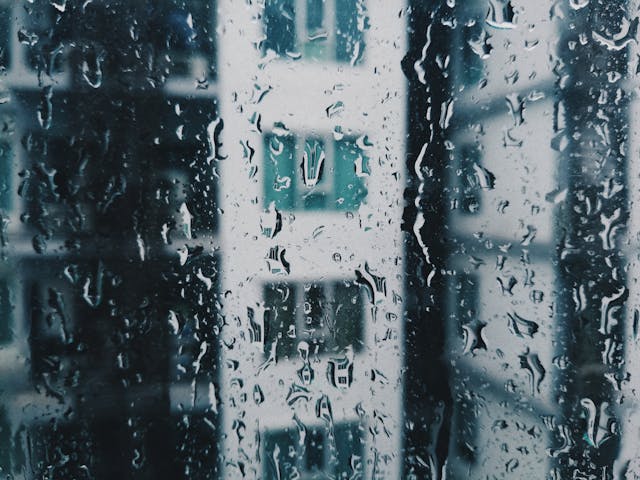
What causes condensation? Condensation is caused by warm, moist air coming into contact with a cooler surface.
Condensation happens in a house when the air in a room is warm and moist and then comes into contact with a cool surface. This often happens in winter when it is much colder outside and the heater is on in the house, but it can happen in any season. Condensation can be the bane of any homeowner because it can cause damp, which damages the materials the house is made from, and it can encourage mold. Mold grows from spores and they are everywhere in the world around us. They grow best in warm, damp conditions, which are usually the conditions you have when you have condensation on your windows. Condensation is also the bane of any camper or caravanner because it quickly forms on the inside of the tent or caravan and can make all of your belongings wet.
Condensation is the reverse of vaporization, and any element can be vaporized or condensed. All you need is enough energy, and some elements require far more energy than other elements. There are four states of matter: solid, liquid, gas, and plasma. Any element can be put into any of these states if there is enough energy. Plasma is a little bit different, but the difference between the first three states is how much energy the atoms in the material have. The more energy that an atom has, the more it will vibrate. The less energy it has, the less it will vibrate. In theory, if you can get an element down to Absolute Zero, which is -273.15℃, then all of the energy would have been removed from it, and the atoms wouldn’t move at all. This is not actually true, though, because the atoms would still move on the quantum level.
We are talking about condensation in a house, which involves water, so let’s concentrate on water. Thermal energy always moves from an area of higher energy to an area of lower energy. When the temperature is below 0℃, the thermal energy in water moves into the air, and the water molecules move less, forming a rigid frame, which is ice. It takes 334 kJ of energy to turn 1 kg of ice into water. If you keep adding energy, the molecules get more excited, and once they pass their boiling point, you will have steam. However, it takes increasingly more energy. You cannot just keep adding the same 334 kJ. To get 1 kg of water past its boiling point takes 2,260 kJ of energy to get 1 kg of water to go from 100℃ to steam. If you can provide that much energy, the water will enter the third state of matter, which is a gas. Once the water is a gas, it can float around in the air. This is vaporization. Anything can vaporize if it has enough energy to get past its boiling point. Some elements require a lot more energy than others to boil, and their boiling point reflects that. Helium has the lowest boiling point at -268.93℃, which is just above Absolute Zero, meaning Helium is almost always a gas, unless you can cool it to close to Absolute Zero, when it becomes a liquid. Several elements have boiling points below 0℃. Then, at the other end of the spectrum, Tungsten has a boiling point of 5800℃. It basically takes an inordinate amount of energy to vaporize Tungsten.
Condensation is the opposite of vaporization. When a liquid gets enough energy to pass the boiling point, it becomes a gas. And when a gas loses enough energy to go back below the dew point, it becomes a liquid again. The dew point is the temperature at which the air becomes saturated with water and no longer hold it. When the water vapor floating around in the air inside your room comes into contact with a cold wall or window, the thermal energy comes out of the water vapor and it condenses, turning back into liquid, which clings to the window until it builds up into big enough drops to run down the window. This is a physical process, and the only way to prevent it is to have less water in your air or to have warmer windows. You can use a dehumidifier to remove water from the air. Double glazing raises the temperature of the inner windowpane, and insulation keeps the walls warmer.
Condensation can drive us crazy, but it can be very useful when it comes to things like desalination. Seawater has a lot of dissolved salt in it. Water boils at 100℃ and turns to water vapor, but salt (sodium chloride) boils at 1465℃, which means the salt gets left behind when the water turns to steam. When the water vapor condenses back to liquid water, it is not salty and is drinkable. And this is what I learned today.
Sources
https://en.wikipedia.org/wiki/Condensation
https://education.nationalgeographic.org/resource/condensation
https://en.wikipedia.org/wiki/Vaporization
https://en.wikipedia.org/wiki/Indoor_mold
https://simple.wikipedia.org/wiki/List_of_elements_by_boiling_point
Photo by Blank Space .: https://www.pexels.com/photo/wet-window-2615444/
